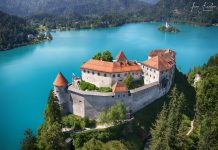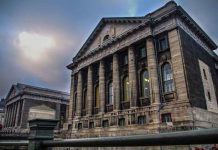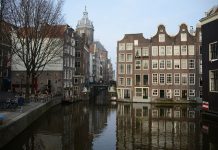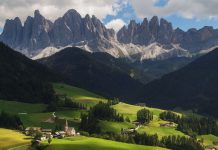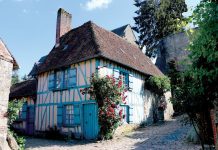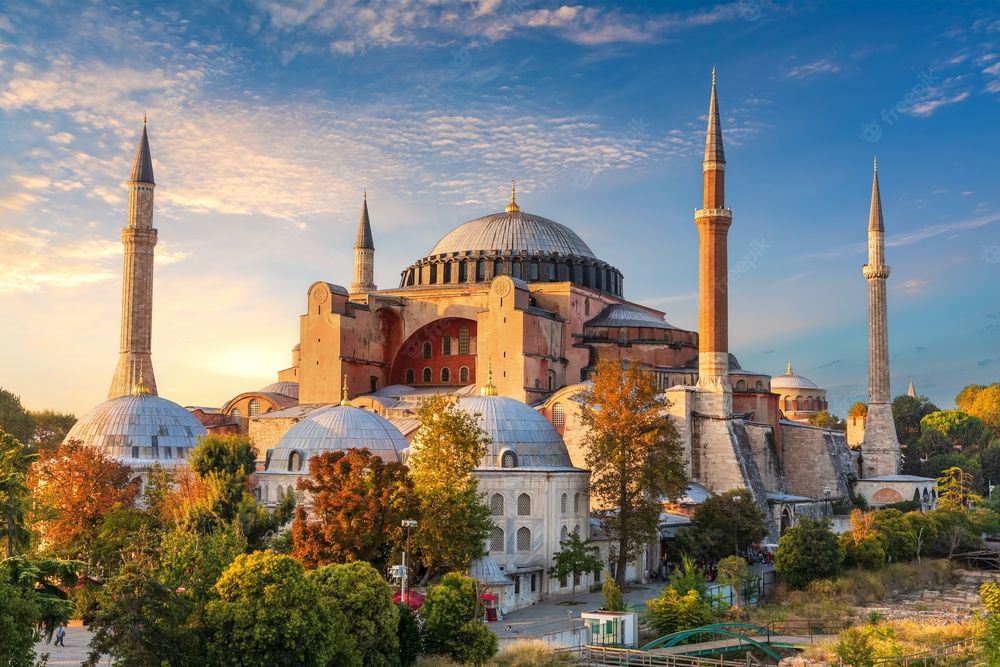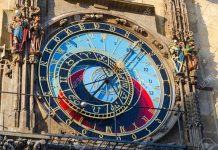In ancient times, the palatial hill from the Sea of Marmara to the Hippodrome. The palatial district extended from Hagia Sophia and the Hippodrome to the cost line, where the sea wall acted as a mighty boundry of great military value. Its basic layout, first determined by Emperor Constantine, soon housed a collection of state buildings with courtvards, throne rooms and auidience rooms, churces and chappels gardens and fountains, libraries, assembly buildings, thermal baths and stadiums. Throughout the centuries palaces decayed due to fires, earthquakes, and other reasons. Finally, whatever remained were covered by earth.
British scientists from the University of St. Andrews in Edinburg made extensive excavations at the Arasta Bazaar in Sultan Ahmet square (1935-38) and (1951-54). Which partly opened up one of the south-western buildings, so called “Great Palace”. The Great Palace had got a big courtyart with perisyle (1872 m²). It was decorated with mosaics. It was at this point that the Austrian Academy of Sciens undertook to rescue. (Supervised by Prof. Dr. Werner Jobst) study ane preserve the famous palace mosaic and to carry out additional archeological examinations (1983-1997) within the scape of a cooperation project with the Directorate General of Monuments and Museums in Turkey.
When the peristylle of The Great Palace was redone under Justinian I. (527-565). The Great Palace mosaic was the largest and the most beautiful landscape in antiqity (VI. century A.D). No where in the world of late antiquity can we find a building with a tessellated pavement of similar size and perfection of workmanship. It was probably made by an imperial workshop that surely have employed the best craftmen gathered from all corners of the Empire, guided by a master artist. It is this circumstance which makes it difficult to compare the piece with creations, and thus to date it by means of typological and stilistic methods. Composing the tessalated pavement, with its many coloured lime, terracotta and glass cubes of 5 mm. One square metre of floor space consumed about 40.000 cubes, which makes for 80.000.000 tesserae for entire area. The mosaic was brought to light only in fragmenta and sections, which together make-up about one seventy the original expance, but these suffice to convice us that it is one of the most magnificent compositions known to us from antique mosaic art.
In The Great Palace Mosaic the main field of the composition was 6 metres in width. On either side of its edge it is accopained by an exquisitely arranged border of folliage each 1.50 metres wide, sufficient to cover the entire hall depth of 9 metres with a tesselleted pavement. The frame is dominated by a highly naturalistic acantus scroll. Acantus are filled with masked heads, exotic fruit and animals. The frame, which sembolises a garden of eden. After frame when looking at the scenes we find a movement from left to right in the notheastern hall. The pictures describe open-air scenes, the life of herdsmen the labour of peasants and the prowess of huntsmen. Scenes of children playing of wilde beast and grazing animals alternate with mythological motifs animal fables and fabulous creatures from exotic countries, animals, hunting, games, bucolic scenes nature and myths are the leading themes in the succession of pictures. On surviving parts of the mosaic we still count 90 different themes populated by some 150 human and animal figures.

